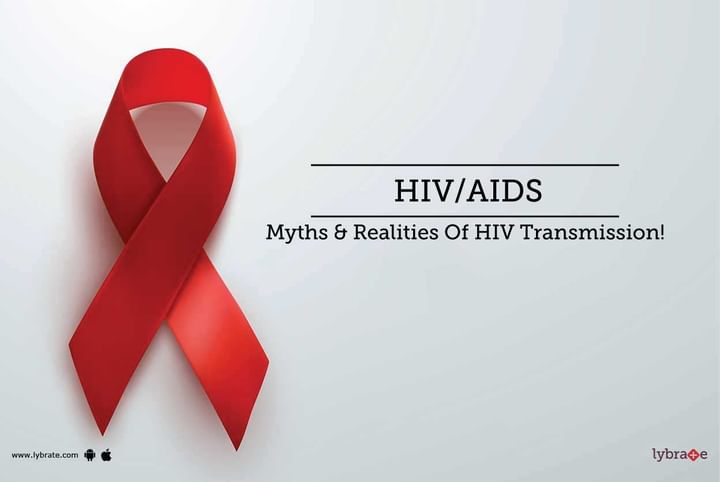HIV/AIDS - Myths & Realities Of HIV Transmission!
What is HIV and AIDS?
HIV is the acronym for the human immunodeficiency virus. It is a type of virus, which causes disease by infecting and killing blood cells (known as CD4 T-cells) central to the body's defence immune system. As these cells are progressively killed, the body becomes less and less able to defend itself against otherwise common illnesses.
AIDS is the acronym for acquired immunodeficiency syndrome. It is the stage of HIV infection where a person's immune system is fully compromised, leaving the body open to a wide range of potentially serious diseases known as opportunistic infections and or non-opportunistic diseases) HIV takes about 10 to 12 years, from initial infection, to fully culminate into AIDS.
HIV infection is predominantly a sexually transmitted Infection, by far the most common mode of infection, particularly in developing countries, is heterosexual transmission.
HIV Transmission:
Despite increased public awareness about HIV, there remains a lot of confusion about how one can get infected and how one cannot. HIV has a way of spurring anxieties in even the best of us and, with it, our sense of reason. We need to understand what conditions are required for an infection to take place and why things like hugging, touching, sneezing, or kissing simply do not satisfy those conditions.
Four Conditions Needed to Transmit HIV:
As serious an infection as HIV is, the virus itself is not all that robust, there four conditions that must take place in order for infection to occur:
1.There must be body fluids in which HIV can thrive. For HIV, this means blood, semen, vaginal fluids, or breast milk. HIV cannot survive for very long in the open air or in parts of the body where there is high acid content (such as the stomach or bladder).
2. There must be a way for the body fluids to enter the body. This happens primarily through sexual contact but can also be spread through shared needles, accidental blood exposure in health care settings, or transmission of the virus from mother to child during pregnancy.
3. The virus must be able to reach vulnerable cells and tissues inside of the body. It is not enough for a body fluid to come into contact with skin. It needs to either enter the bloodstream through a break in the skin or penetrate vulnerable mucosal tissues of the vagina or rectum. A deep cut or wound, for example, provides a more likely route of transmission than a minor scuff or scrape.
4. There must be sufficient amounts of virus in the body fluid. This is why saliva, sweat, and tears are unlikely sources of infection since the enzymes in these fluids actively break down HIV and its genetic structure.
A. Sexual Transmission. HIV is transmitted primarily by sexual contact, both heterosexual and male to male. This can happen while having unprotected sex, vaginal and anal sex with someone infected with HIV.
oral sex is much less efficient mode of transmission of HIV than is anal or vaginal intercourse and incidence of infection by oral sex is extremely low. However there have been well documented reports of HIV transmission that resulted from cunnilingus or fellatio. Therefore, the assumption that oral sex is completely safe is not warranted.
B. Perinatal Transmission. The mother can pass the infection on to her child during childbirth, pregnancy, and also through breastfeeding.
C. Blood Transmission. The risk of transmitting HIV through blood transfusion is nowadays extremely low, due to mandatory meticulous screening for HIV and other STIs of blood and blood products. Among injection drug users, sharing and reusing syringes contaminated with HIV-infected blood is extremely hazardous.
It’s possible to get HIV from tattooing or body piercing if the equipment used for these procedures has someone else’s blood in it or if the ink is shared. The risk of getting HIV this way is very low, but the risk increases when the person doing the procedure is unlicensed, because of the potential for unsanitary practices such as sharing needles or ink. If you get a tattoo or a body piercing, be sure that the person doing the procedure is properly licensed and that they use only new or sterilized needles, ink, and other supplies.
How HIV Cannot Be transmitted?
From both a biological and epidemiological evidence, HIV cannot and has never been shown to be passed from one person to another by the following means:
- Touching, hugging, closed mouth or social kissing or shaking hands
- Touching an object an HIV-positive person has touched
- Sharing utensils or cups
- Eating food prepared by an HIV-positive person
- Touching semen or vaginal fluid
- Using public fountains, toilet seats, or showers
- Through saliva, tears, or sweat that is not mixed with the blood of an HIV-positive person
- By mosquitoes, ticks or other blood-sucking insects.
- Through the air.
- You can’t get HIV from consuming food handled by someone with HIV. Even if the food contained small amounts of HIV-infected blood or semen, exposure to the air, heat from cooking, and stomach acid would destroy the virus. (Source CDC) .
How Do I know If I have HIV?
- The only way to know for sure whether you have HIV is to get tested. Knowing your HIV status gives you powerful information to help you take steps to keep you and your partner healthy.
Always consult a health care provider before going for HIV testing as pre and post counselling for HIV test is vital for proper guidance. Though self-testing by rapid test kits are available in the market, it is well advisable to consult a health care provider as soon as possible after any suspected exposure. Self-testing leads to unnecessary tests performed at very high costs, at incorrect time and intervals.



+1.svg)
